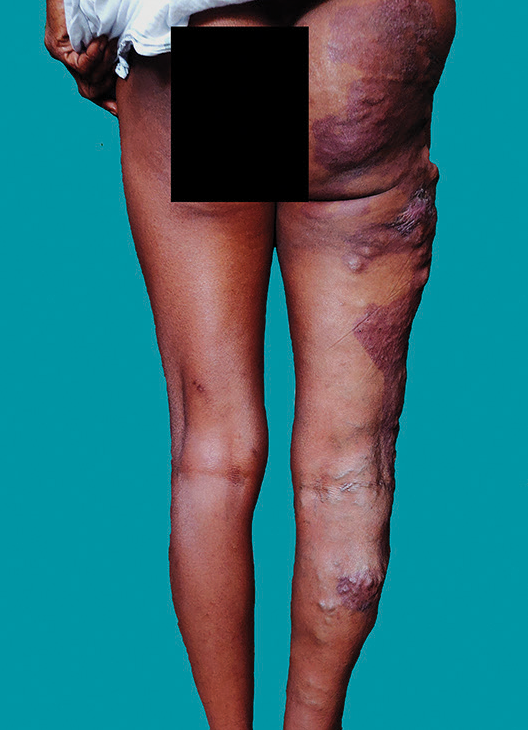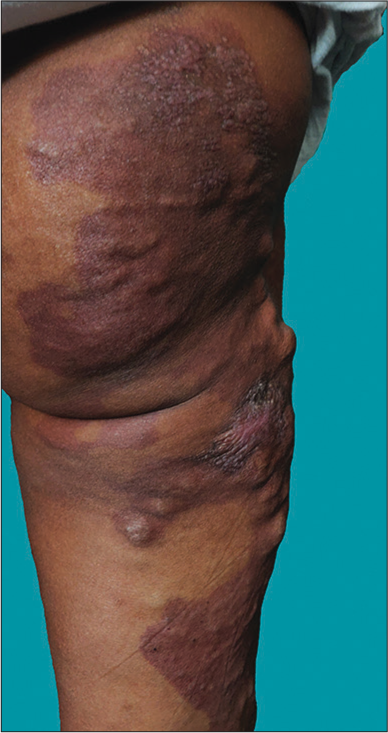Translate this page into:
Klippel–Trenaunay syndrome

*Corresponding author: Rajendra Devanda, Department of Dermatology Venereology and Leprosy, National Institute of Medical Sciences and Research, Jaipur, Rajasthan, India. rdevanda24@gmail.com
-
Received: ,
Accepted: ,
How to cite this article: Couppoussamy K, Devanda R. Klippel– Trenaunay syndrome. CosmoDerma 2023;3:162.
A 29-year-old female presented to the dermatology outpatient department with a reddish stain over her right buttock, thigh, and leg since birth. The patient started developing nodularity around the stain during early childhood. She had intermittent pain over the stain and nodular areas. On cutaneous examination, limb length abnormality was present with a longer right limb than the left. The right thigh, leg, and foot girth were higher than the left side. Non-blanchable dull erythematous stain with a geographical margin extending from the right buttock to the right midcalf was present [Figure 1]. Grouped papules and vesicles with frog spawn appearance were present over the right buttock. Dilated and tortuous veins were noted over the right buttock, posterolateral thigh, and leg, extending to the right foot’s dorsal aspect [Figures 1 and 2]. Patients had no other comorbidities. Genetic testing was not done as the facility for it was not available. Thus, a diagnosis of Klippel–Trenaunay syndrome (KTS) was made based on history and clinical examination. The patient was advised elastic compression stockings, limb elevation, avoid prolonged standing, and 6 monthly follow-up to detect any complications. KTS is a complex vascular malformation due to a mutation in the PIK3CA gene associated with capillary malformation, venous malformation, and overgrowth of the involved limb. Lymphatic malformation may be associated with KTS.[1]

- Non-blanchable dull erythematous stain with a geographical margin noted extending from the right buttock to the right midcalf. Dilated and tortuous veins were noted over the right buttock and posterolateral thigh extending to the leg.

- Grouped papules and vesicles with frog spawn appearance present over the right buttock. Dilated and tortuous veins were noted over the right buttock and posterolateral thigh.
Declaration of patient consent
Patient’s consent is not required as patient’s identity is not disclosed or compromised.
Conflicts of interest
There are no conflicts of interest.
Use of artificial intelligence (AI)-assisted technology for manuscript preparation
The authors confirm that there was no use of artificial intelligence (AI)-assisted technology for assisting in the writing or editing of the manuscript and no images were manipulated using AI.
Financial support and sponsorship
Nil.
References
- Skin-related complications of KlippelTrenaunay syndrome: A retrospective review of 410 patients. J Eur Acad Dermatol Venereol. 2021;35:517-22.
- [CrossRef] [PubMed] [Google Scholar]





